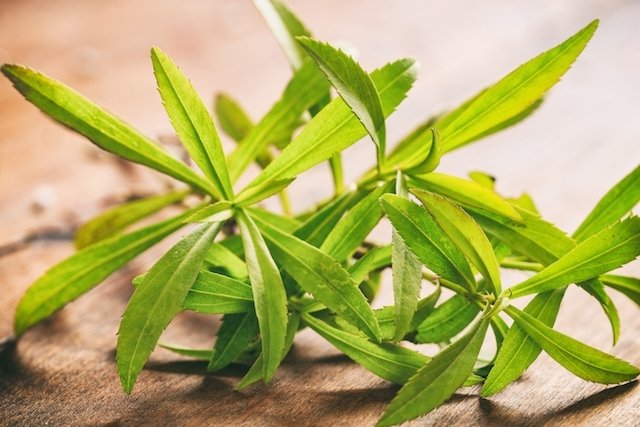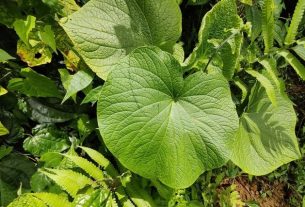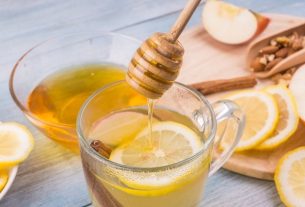Tarragon is an aromatic plant that can be used to prevent diabetes, improve the immune system and combat some microorganisms, in addition to relieving pain and inflammation, as it is rich in bioactive compounds, such as flavonoids and phenolic compounds that exert antioxidant action. and anti-inflammatory.
The scientific name for tarragon is Artemisia dracunculus and can be found in supermarkets and used to season meat, fish and salads, for example.
There are several varieties of tarragon, such as French, Russian and Spanish, which can be differentiated according to the intensity of their flavor.

What is it for
Tarragon can be used for:
- Lower blood sugaras tarragon could improve insulin sensitivity and reduce the secretion of this hormone, helping to keep blood glucose regulated during the day, preventing diabetes;
- Fights bacteriaas Staphylococcus aureus, S. epidermidis, Micrococcus luteus, Bacillus subtilis, B. cereus, Listeria monocytogenes, Streptococcus pyogenes, S. typhimurium, Escherichia coli, Klebsiella pneumoniae, Shigella flexneri, S. marcescens, Pseudomonas aeruginosa, Helicobacter pylori y Salmonella sppby inhibiting the growth of these microorganisms;
- Prevent premature agingas it is rich in phenolic compounds and flavonoids, which prevent damage caused to cells by free radicals;
- Relieve pain and inflammationas the bioactive compounds in tarragon appear to act on the central and peripheral nervous system, causing an analgesic effect and reducing inflammation;
- Improve the functioning of the immune systemas it reduces the production of pro-inflammatory agents and increases the body’s defense cells, preventing the emergence of diseases;
- Fight depression and anxietyas it reduces substances associated with stress, as it contains phenolic and flavonoid compounds, such as chlorogenic acid, caffeic acid, luteolin and quercetin, which have this effect on the body.
Furthermore, tarragon can also help increase appetite, as its extract is believed to be capable of increasing hunger, making it important for it to be part of a healthy diet.
Tarragon can also be popularly used to treat indigestion, irregular menstruation and stimulate menstrual flow, in addition to being able to act as an anticoagulant, but further scientific studies to prove these benefits are not yet necessary.
Tarragon properties
Tarragon has antioxidant, immunomodulatory, antibacterial, antifungal, hypoglycemic, antidepressant, anti-inflammatory and analgesic properties. These properties are due to the fact that it is rich in flavonoids, such as quercetin, kaempferol and apigenin, coumarins and phenolic acids.
How to use
Tarragon can be used to season foods, such as meats, soups, sauces and salads, and can be used as an ingredient to prepare herb salt.
Furthermore, its leaves can also be used to prepare tarragon tea and vinegar. This plant can also be purchased in pharmacies or health food stores in the form of essential oil.
1. Tarragon tea
Ingredients:
- 5 grams of tarragon leaves;
- 1 cup of boiled water;
Preparation mode:
Place the leaves in boiled water, cover and let rest for about 5 minutes. Then strain and drink up to 2 cups of tea per day after meals.
2. Tarragon vinegar
Ingredients:
- 1 and a half cups of tarragon leaves;
- 3 cups of white or apple vinegar;
- 1 teaspoon of black pepper.
Preparation mode:
In a sterilized jar, place the tarragon leaves and black pepper. Add the hot vinegar, let it cool and rest for about 5 minutes. Strain and store in another sterilized jar.
3. Tarragon essential oil
Tarragon essential oil can be used to flavor cosmetic products. The consumption of essential oils is not safe due to their toxicity, however further studies are not yet necessary.
Possible side effects
Tarragon consumed in meals is apparently safe, but it can cause allergies in some people, causing swelling in the mouth.
Too much tarragon essential oil can be toxic and cause nausea, vomiting and diarrhea. However, there is little scientific evidence on the use of this essential oil and, therefore, it is important that a doctor is consulted as soon as any sign or symptom is noticed.
Who should not consume
The consumption of tarragon in the form of tea is contraindicated for pregnant women, during breastfeeding and for children, because there is no scientific evidence to determine the safety of using this plant in these situations.
Furthermore, people taking medication for diabetes, antidepressants or anticoagulants should always consult their doctor before consuming tarragon.
Bibliography
- EKIERT, Halina; ŚWIĄTKOWSKA, Joanna et al. Artemisia dracunculus (Tarragon): A Review of Its Traditional Uses, Phytochemistry and Pharmacology. Frontiers in Pharmacology. Vo.12. 1-18, 2021
- JIAO, Manjing; LIU Xingxiao et al. Comparison of Herbal Medicines Used for Women’s Menstruation Diseases in Different Areas of the World. Frontiers in Pharmacology. Vol.12. 1-20, 2021
- MENDEZ-DEL VILLAR, Miriam; PUEBLA-PÉREZ, Ana et al. Effect of Artemisia dracunculus Administration on Glycemic Control, Insulin Sensitivity, and Insulin Secretion in Patients with Impaired Glucose Tolerance. Journal of Medicinal Food. Vol.19. 5.ed; 481-485, 2016
- OBOLSKIY, Dmitry; PISCHEL, Ivo et al. Artemisia dracunculus L. (Tarragon): A Critical Review of Its Traditional 2 Use, Chemical Composition, Pharmacology, and Safety. Journal of Agricultural and Food Chemistry. Vol.59. 21.ed; 11367-11384, 2011
- MAHAM, Masoud; MOSLEMZADEH, Hemmat et al. Antinociceptive effect of the essential oil of tarragon (Artemisia dracunculus). Pharmaceutical Biology. Vol.52. 2.ed; 208-212, 2014

Sign up for our newsletter and stay up to date with exclusive news
that can transform your routine!
Warning: Undefined array key "title" in /home/storelat/public_html/wp-content/plugins/link-whisper-premium/templates/frontend/related-posts.php on line 12
Warning: Undefined array key "title_tag" in /home/storelat/public_html/wp-content/plugins/link-whisper-premium/templates/frontend/related-posts.php on line 13



